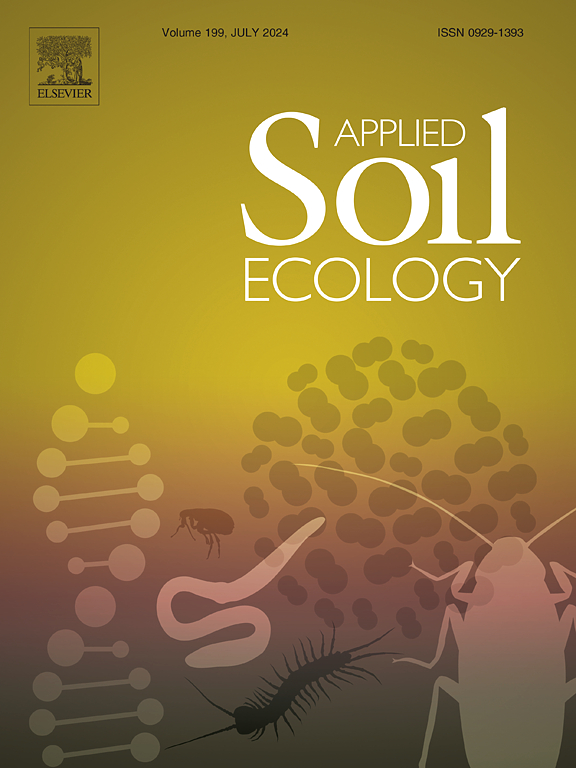The effect of soil microbial traits on soil organic carbon in alpine grassland was limited by depth
IF 4.8
2区 农林科学
Q1 SOIL SCIENCE
引用次数: 0
Abstract
Microorganisms play an important role in regulating the formation and accumulation of soil organic carbon (SOC). However, it has not yet been determined which microbial factors (community, biomass, and necromass) play a role in SOC pool at different depths in alpine grassland ecosystems and how this is achieved. We conducted a large-scale survey and sampling in two alpine grassland habitats on the Qinghai-Tibetan Plateau at two soil layers (topsoil: 0–10 cm and subsoil: 20–30 cm) over an area spanning 1500 km. The distribution patterns of SOC pools and microbial communities in alpine grasslands were analyzed. We found that microbial biomass carbon decreased significantly with depth, and alpine meadow MBC was significantly larger than alpine steppe. Fungal nercomass carbon was the main contributor to SOC in alpine grasslands. Compared to microbial communities, microbial carbon pools had a greater influence on SOC pools, and they were mainly accumulated through microbial nercomass carbon. Soil moisture affects microbial composition, so microbial diversity and associated network complexity were affected by a wide range of moisture factors (including mean annual precipitation and soil moisture). In deeper soils within alpine grasslands, microbial network complexity reduces the SOC pool by influencing microbial community diversity. This study revealed the controls on microbial communities and SOC at different soil depths within different grassland types on the Qinghai-Tibetan Plateau, and the results emphasize the importance of microbial necromass in SOC pool within alpine ecosystems.

求助全文
约1分钟内获得全文
求助全文
来源期刊

Applied Soil Ecology
农林科学-土壤科学
CiteScore
9.70
自引率
4.20%
发文量
363
审稿时长
5.3 months
期刊介绍:
Applied Soil Ecology addresses the role of soil organisms and their interactions in relation to: sustainability and productivity, nutrient cycling and other soil processes, the maintenance of soil functions, the impact of human activities on soil ecosystems and bio(techno)logical control of soil-inhabiting pests, diseases and weeds.
 求助内容:
求助内容: 应助结果提醒方式:
应助结果提醒方式:


